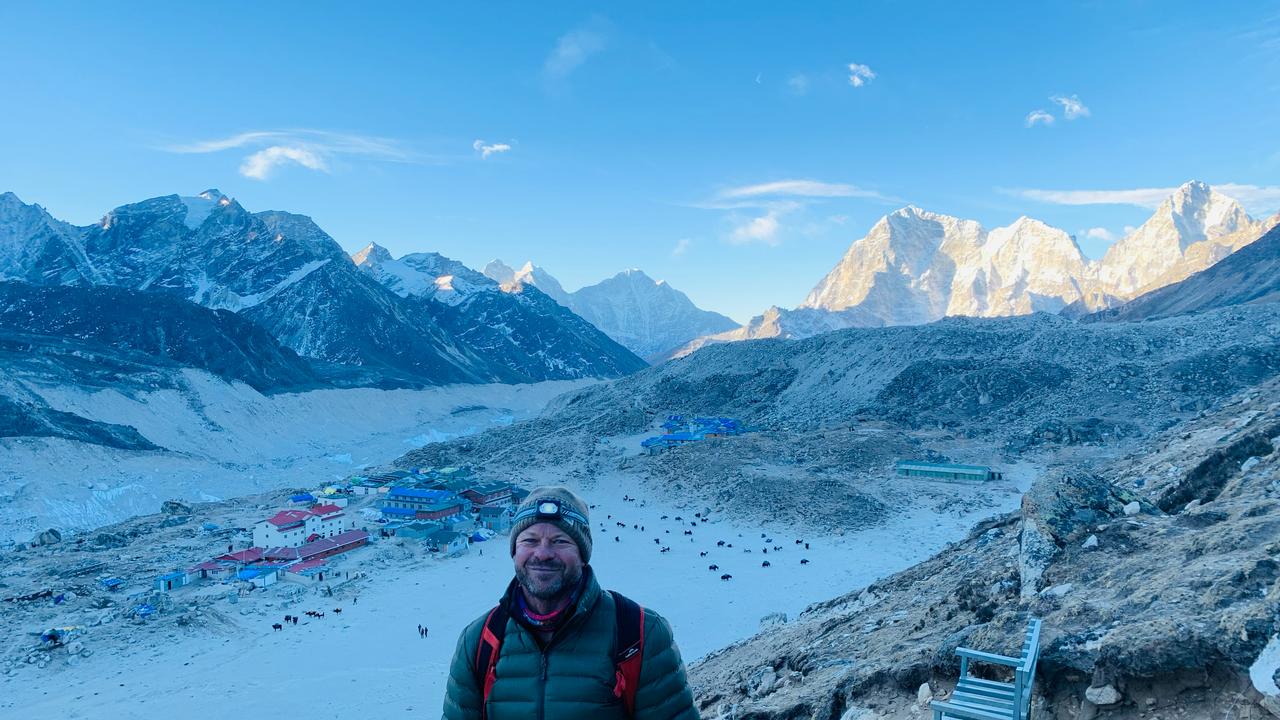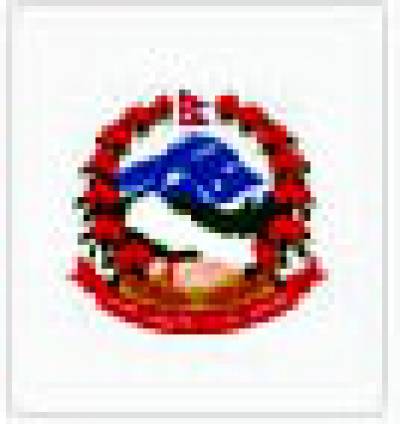EVEREST BASE CAMP THREE PASS TREK 12 DAYS
High genuinely adventurous trekkers, the Everest Base Camp Three High Pass Trek is a challenging adventurous trekLead. This 12-day hike plunges you into the depths of the Himalayas, where you have stunning views of Mount Everest and other looming peaks. This is an extremely strenuous hike and not recommended for beginners. We also offer myriad other trekking opportunities for experienced trekkers looking to test their limits.
The adventure starts with a flight from Kathmandu to Lukla, one of the most heart-pounding airports on the planet. This is where you begin trekking to Jorsalle, a small village along the Dudh Koshi River. As you journey toward the iconic Tengboche Monastery the terrain starts to be a little more rugged and you begin to experience the full sense of scale of the Himalayas all around you.
Next, you continue to the beautiful village of Chhukung, at the base of the surrounding peaks, and your acclimatization stops. You'll be spending 1 day in Chhukung Ri to acclimatize your body in high altitudes. It is important to acclimatize in this region to prevent altitude sickness and have a smooth trek.
Descending from one of the highest points of the trek, the Kongmala Pass, which you will have already crossed once you acclimatize. It will be steep but the views on the other side are literally worth it. Onward to Everest Base Camp, where you can take in the iconic views of the Khumbu Icefall and its surrounding peaks.
One of the highlights of this trek is the trek to Kala Patthar at an altitude of 5,550 meters, a vantage point that provides spectacular views of Mount Everest, Lhotse, and Nuptse. Post this memorable experience, you will cross the Dzongla Pass and trek further toward the Renjo La Pass, which is another hard but rewarding part of your trek.
After crossing Renjo La Pass, you will go down to Gokyo and visit the beautiful Gokyo Lakes and one of the best scenic places in the Everest region. The next day, you will descend to Thame, Phakding, and finally Lukla where you will take a flight back to Kathmandu completing the trek.
It is a truly exceptional trek, which offers an experience that is undoubtedly second to none of the world’s highest mountains, but tests the physical and mental resolve of the intrepid adventurer.
IMPORTANCE NOTICE: This trek is not for beginner trekkers. It is only suitable for very highly experienced trekkers who have completed several treks at altitudes above 5000 meters. Additionally, please note that from March to May and September to December, the Lukla flights will operate from Ramechhap. You will need to drive 5-6 hours from Kathmandu to Ramechhap to catch the flight.
ITINERARY
Day 1 : Fly from Kathmandu to Lukla & Trek to Jorsalle (2,740m) Duration: 7-8 hours.
Your journey begins with an early morning flight from Kathmandu to Lukla, which is one of the most thrilling flights in the world, offering breathtaking aerial views of the Himalayas. Upon arrival in Lukla, you will begin your trek with a descent toward Phakding, passing through Dudh Koshi River. After lunch, continue on to Jorsalle, a small village where you'll spend the night. This day is a warm-up to get accustomed to the terrain and your trekking pace.
Day 2 : Trek from Jorsalle to Tengboche (3,867m) Duration: 7-9 hours.
On the second day, you will cross the Dudh Koshi River and ascend toward Namche Bazaar. After reaching Namche, the trail continues along a steady ascent through rhododendron forests to Tengboche, home to the Tengboche Monastery, which offers panoramic views of Mount Everest, Lhotse, and Ama Dablam. You’ll have the opportunity to explore the monastery before settling into your guesthouse for the night.
Day 3 : Trek from Tengboche to Chhukung (4,730m) Duration: 7-8 hours.
From Tengboche, you will continue your trek through Dingboche to reach Chhukung. The landscape will change as you approach Chhukung, where the views of Ama Dablam and Lhotse are spectacular. This trek involves a gradual ascent and the terrain becomes more rugged. Chhukung will serve as your base for the next day’s acclimatization hike to Chhukung Ri.
Day 4 : Rest Day at Chhukung – Hike to Chhukung Ri (5,550m) Duration: 4-5 hours.
This is an acclimatization day. You will hike to Chhukung Ri at 5,550 meters for panoramic views of the surrounding peaks. The climb is steep, but the stunning vistas of Makalu, Lhotse, and Ama Dablam make it all worth it. After returning to Chhukung, you’ll rest and prepare for the challenging days ahead.
Day 5 : Cross Kongma La Pass (5,535m) & Trek to Lobuche (4,910m) Duration: 7-9 hours.
After your acclimatization day, it’s time to tackle one of the most demanding sections of the trek: crossing the Kongma La Pass. This high-altitude pass offers stunning views, but it’s a physically demanding ascent. After reaching the pass, you’ll descend towards Lobuche, a small settlement at the foot of Pumori, where you'll rest for the night.
Day 6 : Trek to Gorakshep & Visit Everest Base Camp (5,364m) & Return to Gorakshep Duration: 7-8 hours.
Today is the day you reach the iconic Everest Base Camp! The trek from Lobuche to Gorakshep is a challenging but rewarding one, offering magnificent views along the way. Once in Gorakshep, you'll trek to Everest Base Camp, where you’ll enjoy the awe-inspiring views of the Khumbu Icefall and Mount Everest itself. After soaking in the views, return to Gorakshep for the night.
Day 7 : Hike up to Kala Patthar (5,555m) & Trek to Dzongla (4,830m) Duration: 6-7 hours.
An early morning hike up to Kala Patthar is a highlight of the trek. The ascent to this viewpoint offers some of the best panoramic views of Everest and the surrounding peaks. After spending time at the top, you’ll trek to Dzongla, a remote village nestled at the base of Chola Pass, for an overnight rest. This will help you adjust before crossing another high pass.
Day 8 : Cross Cho La Pass (5,420m) & Trek to Gokyo (4,790m) Duration: 9-10 hours.
Today, you'll cross the challenging Cho La Pass, which offers breathtaking views but requires careful navigation. The trail is rocky and steep, and weather conditions can be unpredictable. After successfully crossing the pass, you’ll descend to Gokyo, a stunning village near the Gokyo Lakes, where you’ll rest for the night and enjoy the spectacular scenery.
Day 9 : Cross Renjo La Pass (5,360m) & Trek Down to Thame (3,820m) Duration: 7-9 hours.
The Renjo La Pass is another difficult yet rewarding crossing. The pass provides a stunning view of Mount Everest and the surrounding peaks. After crossing, you'll descend into the beautiful Thame Valley and reach Thame, a traditional Sherpa village known for its Buddhist monasteries. You’ll rest here for the night.
Day 10 : Trek from Thame to Phakding (2,640m) Duration: 6-7 hours.
On this day, you’ll begin your descent toward Phakding. The trail gradually becomes gentler as you descend through pine forests and alongside the Dudh Koshi River. It’s a more relaxed day, giving your body time to adjust to the descent. Once in Phakding, you’ll spend the night in a lodge.
Day 11 : Trek from Phakding to Lukla (2,860m) Duration: 4-5 hours.
On your final trekking day, you’ll retrace your steps back to Lukla. This relatively short trek allows you to relax and reflect on your incredible journey through the Everest region. Once in Lukla, you’ll have time to rest and celebrate the completion of the trek.
Day 12 : Fly Back to Kathmandu Duration: 35 minutes.
After a long and rewarding journey, you’ll catch a scenic flight back from Lukla to Kathmandu, where your trek ends. You’ll have the rest of the day to explore the capital or rest before departing for your next destination.
SERVICES
What’s Included in Your Package:
- Domestic Airport pick-up and private car/jeep transport.
- Three meals a day (breakfast, lunch, and dinner) during the trek.
- Fresh fruit is served every evening after dinner.
- Accommodation in trekking lodges (Tea Houses) throughout the trek.
- All necessary paperwork, including the Sagarmatha National Park Entry Permit and Khumbu Pasang Lhamu Rural Municipality fees.
- Round-trip Kathmandu-Lukla-Kathmandu flights, along with private airport transfers and domestic airport taxes.
- A highly experienced, friendly, knowledgeable, English-speaking, government-licensed guide, with all his salary, meals, accommodation, transport, and insurance covered.
- Strong and helpful Sherpa porters (one porter for every two trekkers), equipped with proper safety and walking gear, including their salary, meals, accommodation, and insurance.
- Comprehensive medical supplies, including a first aid kit.
- Emergency helicopter service arrangements (covered by your travel insurance company).
- Use of a sleeping bag, down jacket, duffel bag, and walking poles (if you don’t have your own; to be returned after the trip).
- Sherpa Expedition and Trekking T-shirt.
- Government taxes and official expenses.
- Oxygen meter to monitor your pulse, oxygen saturation, and heart rate twice daily, helping to detect any symptoms of Altitude Mountain Sickness (AMS) and ensuring your well-being during the trek.
- Assistant guide for groups of 8 or more people.
What’s Not Included in Your Package:
- Meals in Kathmandu (lunch and dinner).
- Hotel accommodation in Kathmandu.
- Nepal entry visa fee (easily obtained on arrival at Tribhuvan International Airport in Kathmandu). Visa fees are as follows: $30 USD for a 15-day visa, $50 USD for a 30-day visa, and $125 USD for a 90-day visa.
- Personal travel and medical insurance.
- International airfare.
- Personal expenses (e.g., souvenirs, additional services).
- All alcoholic and non-alcoholic beverages, including soup, tea, coffee, hot chocolate, cocoa, mineral water, extra food, and cold or hot drinks during the trek (purchased along the way or in the tea houses).
- Desserts and sweet items such as chocolate, cake, pie, and pudding.
- Hot showers and battery charging services at the tea houses.
- Tips for the guide, porter, and driver (tipping is customary).
- Excess baggage over 10 kg for the Lukla flight.
Note: If you need to return early from the trek due to illness or any unforeseen circumstances, the costs for the flight, hotel, meals, mountain rooms, etc., are non-refundable. You will be responsible for any additional expenses in Kathmandu, including hotel and food costs.
EQUIPMENTS
The following information will give you some idea about what you need to bring for the trek. It is important you do not forget the essential items, as this will determine your comfort and safety on the trek. Equally important is that you do not burden yourself with unnecessary equipment on the trek.
General
- All season sleeping bag and down Jacket (we can provide if you need it, but has to be returned after the trek)
- Duffle bag ( Sherpa Expedition & Trekking provide duffle bag during the trek but has to be returned after the trek)
- A wind and waterproof thin layered jacket (a must-have for morning and evenings above 3,000m)
- Daypack
Upper Body- Head / Ears / Eyewear
- A pair of half gloves
- A warmer hat that covers the ears
- Sunglasses
- Neckwarmer
- Sunscreen (35 to 60 SPF)
- Headlamp and an extra set of batteries
Hands
- A pair of half gloves for walking poles(if you prefer)
- Warmer shell gloves and liner
Upper Body
- long sleeve t-shirts
- Thermal tops
- wool jacket or pullover
- Sports bras for women and girls
- Water and windproof shell jacket
Lower Body
- Thermal underwear (especially trousers)
- Crampons
- windproof and waterproof trousers
- warmer trousers
- Comfortable trekking pants
- Extra casual sport pants
Footwear
- A pair of good waterproof trekking boots
- Pair of sandals
- 4-5 pairs of woolen socks
- Sock liners
- Light shoes and sneakers
- First Aid Kits and Medicines
- Assorted adhesive bandages (fabric preferred)
- Blister treatment cream or similar
- Insect / anti-itch ointment
- Ibuprofen or other pain-relief medication
- Diamox (125mg to 250mg tablets for altitude sickness)
- Warps, splints, and wound coverings butterfly bandage
- Water purifying pills
(Note our company guide will carry the medicines and first aid kits during the trek. However, we recommend you bring your personal first-aid kit as well)
Miscellaneous - but must be useful on the trek
- 4 passport-size photos with original passport
- Water bottle & filter
- Flight details (please make a copy and leave one pic at our office in KTM because in case you want to change your flight date)
- Bathroom kit (conform, should be included toilet paper, plastic bags, hand wipes, towel, and soap, etc.)
Extra things
- Comfortable trekking poles
- Quality energy dry foods (up to you)
- Power bank and music players
- Camera (memory card, chargers, and extra batteries)
GOOD TO KNOW
🌍 Good to Know: Everest base camp three high pass trek — 12 days
Trek Everest Base Camp Three High Pass trek is quite a challenging journey for solely experienced trekkers. This 12-day journey through the Khumbu region boasts exhilarating ascents, stunning views, and rugged paths. It isn’t for novices but for those in quest of an adventure at high altitudes with challenging ascents.
✈️ Flight to Lukla: The Adventure Is On
The journey starts with a dramatic flight from Kathmandu to Lukla. Renowned for its steep runway, Lukla is deemed as one of the most thrilling airports on the planet. The flight itself provides gorgeous aerial views of the mountains, a sensory prelude to what’s coming down the road. Once in Lukla, your adventure begins, hiking toward Jorsalle.
🏞️ Hike to Jorsalle, Tengboche, and Chhukung
Your journey takes you through verdant forests, traditional Sherpa villages, and the banks of the Dudh Koshi River. From the gateway town of Lukla you’ll visit the towns of Jorsalle and Tengboche — the latter is famous for the Tengboche Monastery, one of the most recognizable sites in the Everest region. From Tengboche, you’ll head on to Chhukung, a lovely village with amazing views of Ama Dablam and Lhotse.
🌄 Acclimatisation in Chhukung Ri
Acclimatization is key to high-altitude trekking, and a day spent at Chhukung Ri ensures that your body acclimatizes to the thinning air. The trek to Chhukung Ri rises to 5,550 meters, providing panoramic views of Makalu, Lhotse, and other Himalayan behemoths. Acclimatization makes sure that altitude sickness stays at bay so you stay fit for the difficult parts of your climb.
🏔️ Kongmala Pass to the Base of Everest
Once you’ve acclimatized, you’ll tackle the demanding Kongmala Pass. This high-altitude pass is going to challenge your endurance as you climb well beyond 5,300 meters. After crossing, you will walk toward Everest Base Camp. Getting here is an epic accomplishment, and you’ll find the colossal Khumbu Icefall and gigantic Mount Everest looming in the distance at Base Camp. Nothing compares to the sense of accomplishment here.
⛰️ Kala Patthar: The Sky-Peaking Point
Next, you’ll trek to Kala Patthar (5,550 meters), a well-known viewpoint with the best panoramic views of Everest. From here you’ll see Everest in all its glory along with Nuptse, Lhotse, and surrounding peaks. These are often seen as the highlight of the trek, with a scenery that makes all the effort worthwhile.
🏞️ Between Dzongla and Renjo La Pass
After Everest Base Camp, you hike through the Dzongla Pass, another strenuous section, before crossing over the iconic Renjo La Pass. The pass boasts breathtaking views of Gokyo Lakes and the neighboring mountains. Crossing the Renjo La Pass is hard work, but the stunning scenery makes this one of the most breathtaking sections of the trek.
🌅 Gokyo and Thame
Having crossed the high passes, you’ll make your way towards Gokyo and the remarkable Gokyo Lakes, framed by the towering background of Cho Oyu. It is known for its natural beauty, clear, turquoise waters, and high peaks. From Gokyo, you’ll descend down toward Thame and then to Phakding where the last leg of your trek back to Lukla will ensue.
✈️ Flight Back to Kathmandu
After your amazing trek through the Himalayas, you return to Lukla and catch the flight back to Kathmandu. The journey is over but the mountains, the views, and the challenge you conquered will be with you forever.
MAP
PHOTOS/Videos
Departures
Select a departure month
Fill out the form below and a Travel Expert will reach out to create your perfect tour.
FAQS
Is the Everest Base Camp Three High Pass Trek suitable for beginners?
No, this trek is very challenging and is designed for experienced trekkers only. It involves high-altitude passes, difficult terrain, and long days of trekking. Beginners should consider a less strenuous trek, like the classic Everest Base Camp trek, before attempting this one.
What is the highest altitude on the trek?
The highest point of the trek is Kala Patthar, which is at 5,550 meters (18,208 feet). This offers the best panoramic views of Mount Everest and other surrounding peaks.
How long does the trek take?
The trek lasts for 12 days, including acclimatization days and time for crossing the high passes. The entire trek is designed to give you a chance to adjust to the altitude while still maintaining a steady pace.
Do I need to be physically fit to complete the trek?
Yes, good physical fitness is essential. The trek involves several days of strenuous walking, steep ascents, and high-altitude crossings. A high level of fitness will help you cope with the altitude and the challenging terrain.
How do I acclimatize during the trek?
Acclimatization is built into the trek’s itinerary. You’ll spend a day at Chhukung Ri to adjust to the altitude before tackling the higher passes. It’s important to follow a slow and steady pace to prevent altitude sickness and to stay hydrated.
What kind of gear do I need for the trek?
You’ll need high-altitude trekking gear, including sturdy trekking boots, warm clothing (layers), a down jacket, a sleeping bag rated for cold temperatures, trekking poles, and a good-quality backpack. A good quality headlamp and water purification system are also essential.
What is the weather like during the trek?
The weather can be cold and unpredictable, especially at higher altitudes. You’ll experience chilly mornings and evenings, with temperatures dropping below freezing at night. Days can be sunny, but weather conditions can change quickly, so be prepared for rain, snow, or wind.
Are there any risks involved in the trek?
Yes, this trek involves high-altitude trekking, which carries the risk of altitude sickness. It is crucial to follow acclimatization guidelines and listen to your body. Additionally, crossing high passes can be physically demanding, and the weather conditions can be unpredictable.
Is a guide and porter required for this trek?
While not mandatory, hiring a guide and porter is highly recommended. They can help you navigate difficult routes, ensure your safety, assist with acclimatization, and carry your gear, allowing you to focus on the trek itself.
What happens if I need to turn back or experience medical issues during the trek?
In the event of medical issues or if you need to turn back, your guide will help you make arrangements for a safe descent. Helicopter evacuation is available in case of an emergency, though it can be costly. It's recommended to have proper travel insurance that covers high-altitude trekking and medical evacuation.
Latest Traveller’s Reviews
Travel experiences of our clients who recently returned from their trips.
100%
Based On 6 Reviews
Grzegorz Łukasik
Peru
Trekking with the Best
I chose the Everest Three High Pass Trek because I wanted something more adventurous and less touristy than the classic base camp trek—and I got exactly that! Sherpa Expedition & Trekking provided top-tier service, and Namgel Sherpa, our guide, was an absolute gem. Namgel's calm demeanor and deep knowledge of the mountains gave our whole group a sense of trust and stability. Every detail, from permits to accommodation, was taken care of. The trek itself was stunning—those three passes each felt like a victory, with views that made the exertion totally worth it. I especially appreciated how Namgel monitored our health at altitude. He carried oxygen and had a pulse oximeter, checked in with each of us daily, and adjusted the itinerary when needed. The food was surprisingly varied and hearty—Dal Bhat power really is 24-hour power! I highly recommend this trek for anyone who wants a real mountain adventure—and Sherpa Expedition is the team to do it with. Namgel made the entire experience unforgettable.
Chloe Nguyen
Australia
An Unforgettable Trek
The Everest Three Pass Trek with Sherpa Expedition & Trekking was the most exhilarating and humbling experience of my life. It pushed me physically and emotionally, but having Mingma Sherpa as our guide made every single challenge manageable—and even enjoyable. Mingma had a quiet confidence about him that instantly made us feel safe. He knew every trail, every shortcut, and every trick to make the altitude easier to handle. What stood out most was how much he cared—not just about our health and safety, but also about our experience. He taught us Sherpa customs, pointed out hidden mountain views, and even helped one of our group members overcome altitude symptoms with such patience and professionalism. Crossing Renjo La Pass was the highlight for me—it was like walking on top of the world. The views were staggering, and Mingma timed our departure perfectly to avoid weather issues. He even carried an extra jacket for someone who forgot theirs! Sherpa Expedition handled everything from transport to lodging perfectly. It was clear this wasn’t their first rodeo. I can’t recommend them—and especially Mingma Sherpa—highly enough.
Julian Weber
Georgia
A Trek That Took My Breath Away
The Three Pass Trek is often called the most scenic and demanding trek in the Everest region—and now I understand why. Thankfully, we had Tashi Dawa Sherpa from Sherpa Expedition & Trekking to lead the way, and I can say with full confidence: we couldn’t have done it without him. Tashi was more than just a guide. He was a motivator, a cultural ambassador, and at times, a guardian angel. His mountain instincts are razor-sharp. When weather shifted, he knew what to do. When we were tired, he slowed us down and gave us the encouragement we needed. Cho La was the most intense day for me. It was steep, icy, and exhausting. But Tashi stayed right by my side, offering constant support. He even helped carry my bag for the last hour without hesitation. Every day brought a new type of beauty—lush valleys, frozen lakes, endless glaciers, and those massive Himalayan peaks all around. The Gokyo Lakes felt like a sacred place. Tashi made the trek not just doable, but magical. If you’re serious about trekking the Three Passes, go with Sherpa Expedition—and if possible, request Tashi Dawa. He’s the best of the best.
People Considering This Package Right Now Check availability






















